SpY
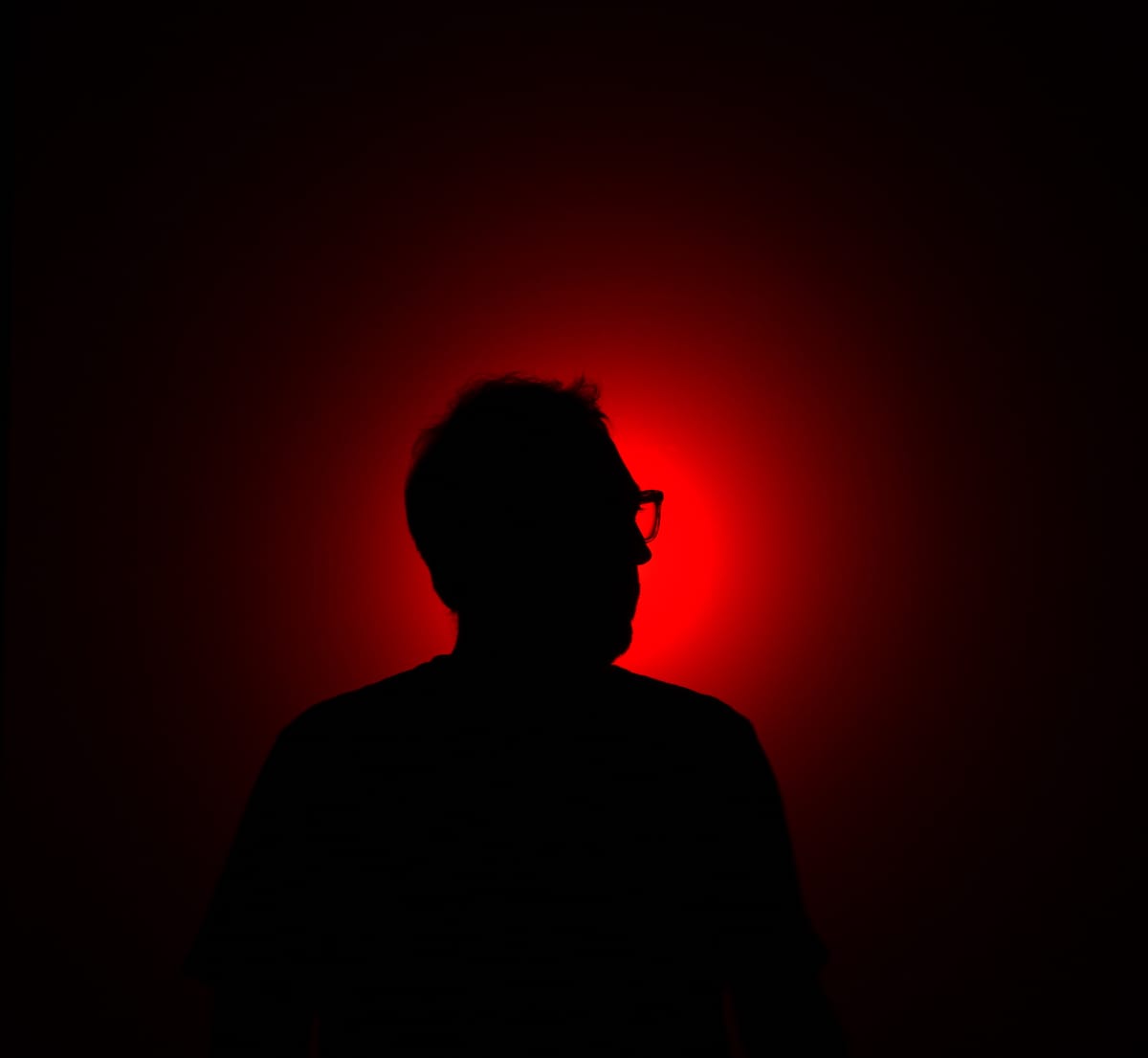
A conversation with
SpY
The enigmatic artist reveals the motivation and challenges behind some of his biggest work, and blows our mind with scale.

Your career began as a graffiti artist now work across mediums, both physical and digital. How did you progress from your early beginnings to where you are now?
I started out as a graffiti writer in the late 1980’s, inspired by what I saw in the streets. Although I had no art education or experience with painting, I was strongly attracted by the idea of seeing my name everywhere. This made me develop my own approaches and styles.
My goal is to raise important questions and to trigger reflection around the artworks
The many years I spent devoted to this kind of street work keened my senses to the city as a unique setting full of untapped potential for art making. In my journey since then my methodologies have evolved as I conceptualised and presented new approaches, from the ‘micro’ intervention on an existing urban element to the ‘macro’ scale of a huge installation in the core of a large city.
Being always observant and receptive to this dialogue with the city made me understand how cities behave as living entities that undergo conflicts and transformations, which in turn affect the lives of city dwellers. Cities are not aseptic spaces like the ones you find in galleries, museums or art fairs. They are in constant evolution, and this makes part of the process of art making and influences the way the public relates to the artwork.
From my graffiti years to the present day, my work has been consistently led by a curiosity to research and test new tools and formats. I invest a large amount of time in the conceptualisation of my projects, including theory, testing and management. My goal is to raise important questions and to trigger reflection around the artworks, and working with different formats provides me with a wide range of possibilities for this.
This path eventually led to the founding of SpY Studio, born from the need to work in very large formats and to collaborate with different professionals in the production of international projects. The studio is a fluid space that can efficiently adapt to the challenges of each new project. Working transversally across a variety of disciplines and collaborating with specialists in different areas opens up a large potential, but you need a very solid work methodology that can always face new challenges, while being flexible enough to allow room for experimentation and the unexpected.
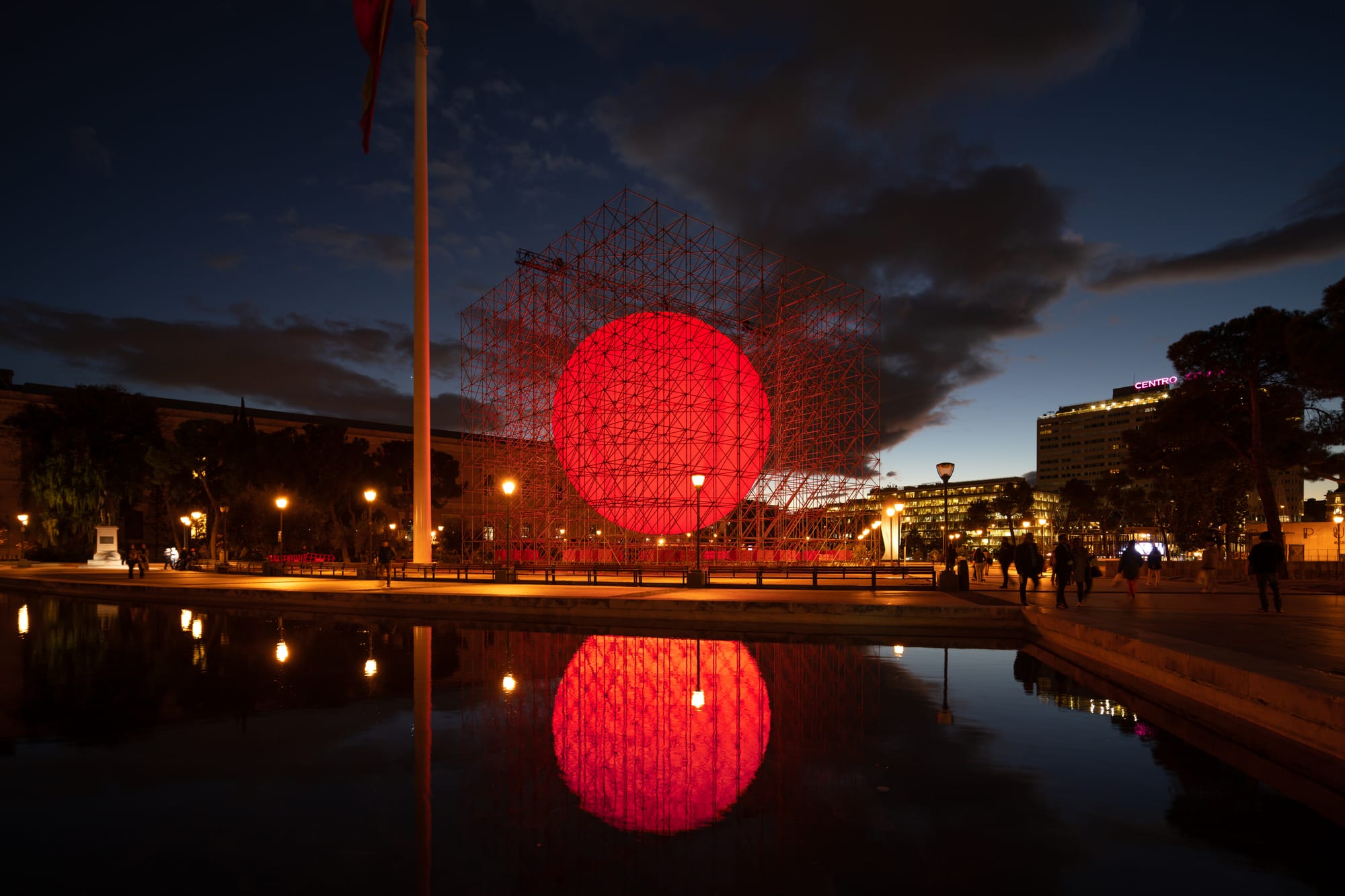
You’ve exhibited your art in small spaces, galleries and museums, and at a very large scale outdoors. Which environment do you find most inspiring to work in? Which is most challenging?
Producing art on a monumental scale allows me to set up huge contrasts, and this is of course important, but this approach needs to be well grounded and tuned to the dialogue with the context and the public.
Projects such as “Earth” or “Divided” are founded on simple concepts and formal strategies. Both are formed by two elemental geometric shapes –square and sphere– that are formalised in very strong terms. For the viewer standing close to the piece the experience can be overwhelming, but the perception is different when the piece is discovered from a distance. Instead of towering upon you, it then shrinks against the cityscape.
*For example, the installation “Monolith” we produced last year in Barcelona was an exploration of the idea of the screen, and of our problematic relation with the screens and with data. In this case the viewers became especially involved as a fundamental part of the resulting art piece.
We formalised the concept with a large vertical screen installed inside a narrow pedestrian space. The physical screen itself, and its stark red color, was the main element of the artwork. The screen displayed a series of audiovisual passages narrating the story of humans and data, from the conception of the first piece of data until the raise of AI and technological trans-humanism.
A continuous stream of thousands of viewers visited the installation over the two days it was installed. People would stand in front of the large display, watching and recording with their phones, becoming both a passive viewer and a fundamental active subject of the whole artwork. It perfectly closed the conceptual circle of the project.
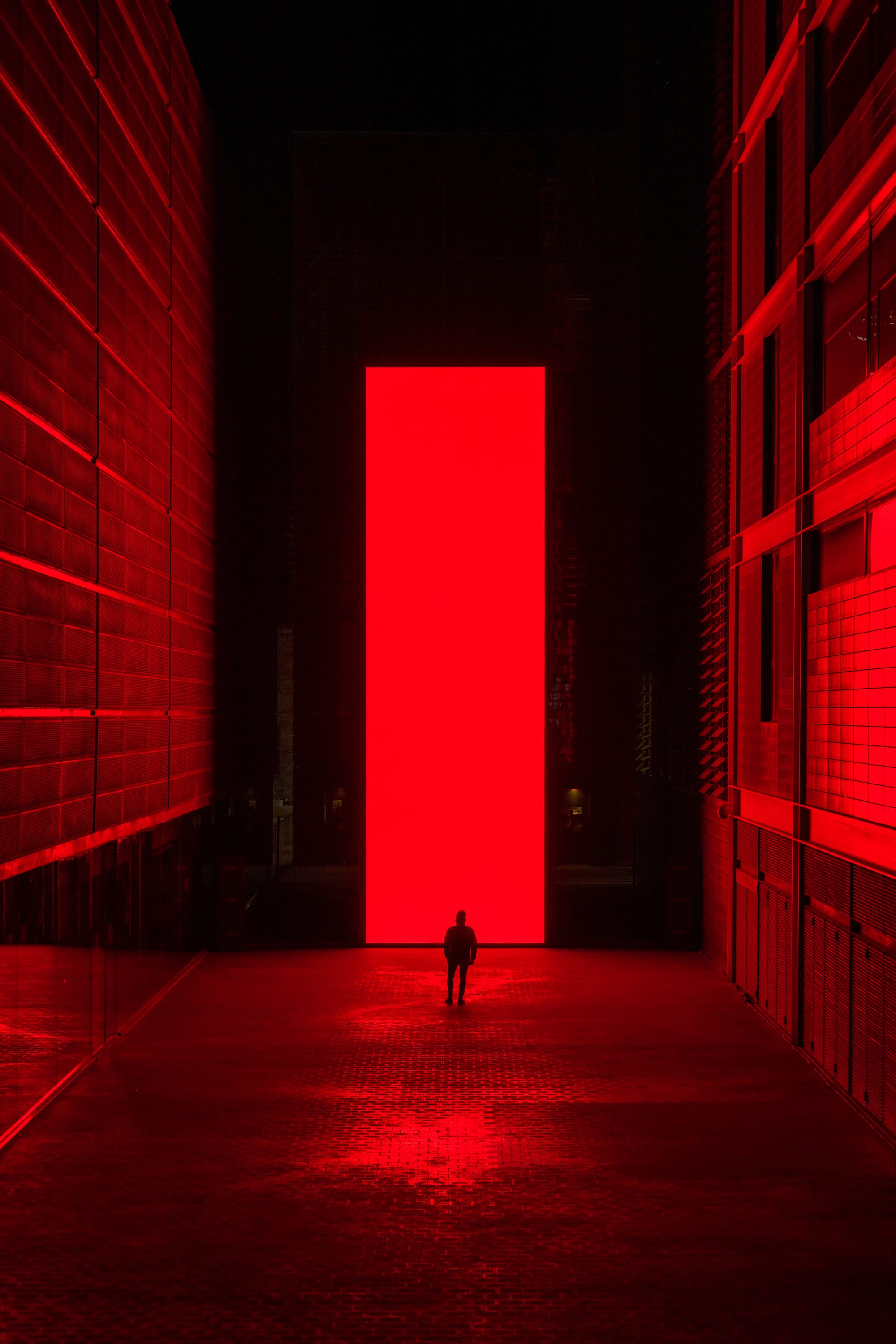
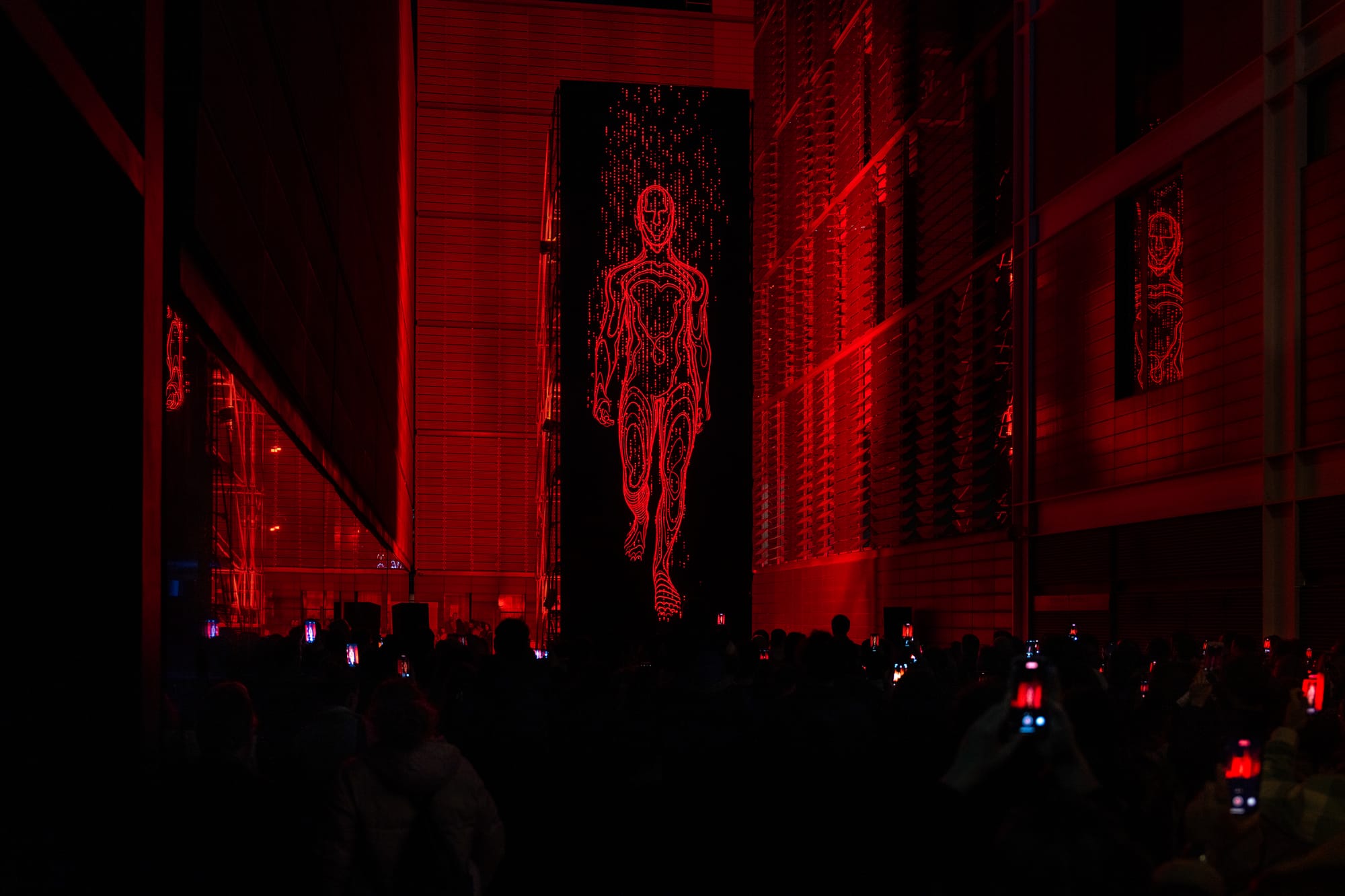
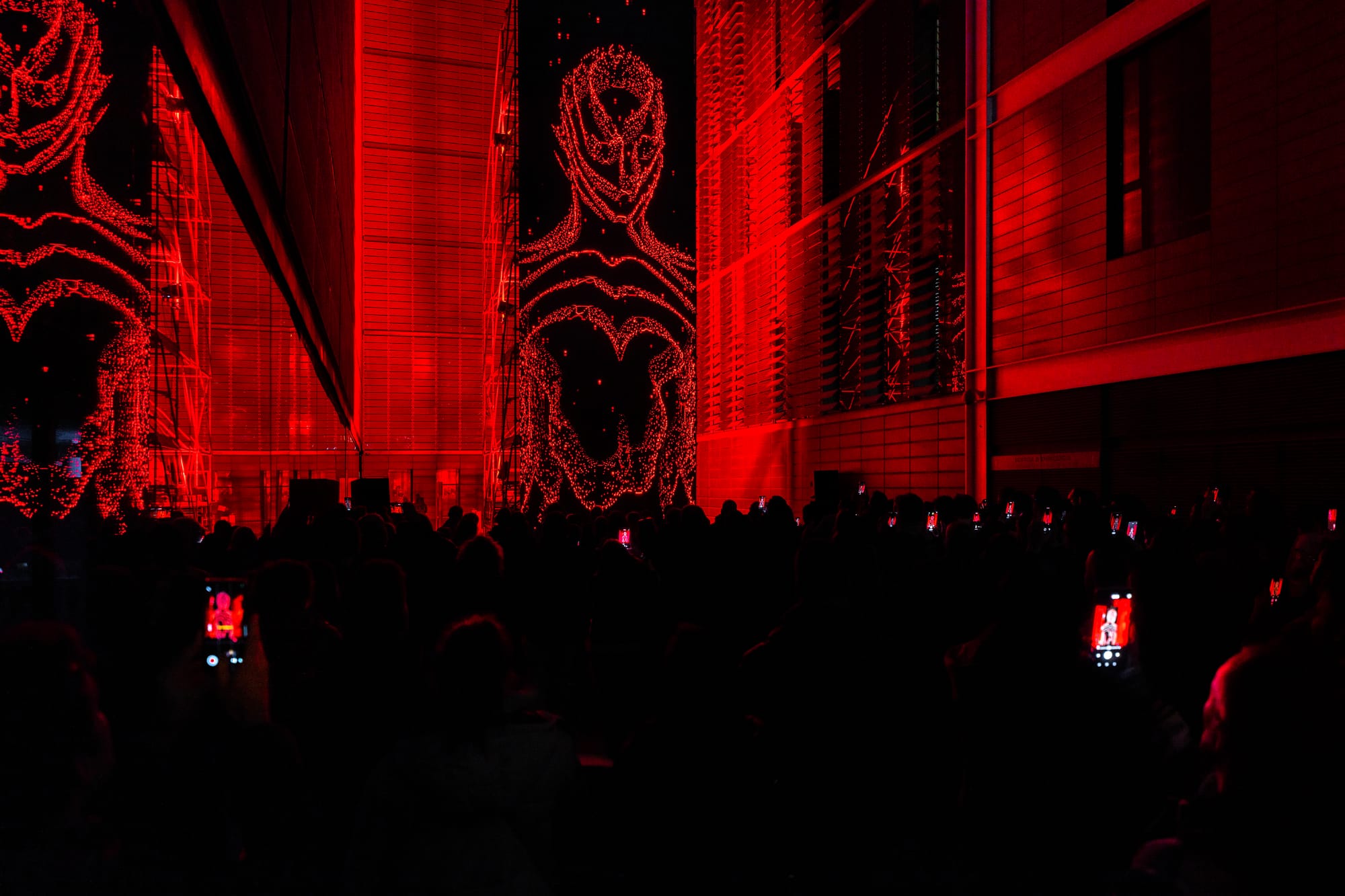
“Monolith” explores the present and future of our relation with screens and data using light, sound and context. It was unveiled in Barcelona as part of Llum BCN Festival 2023.
Each of your art installations seems to push into a new area, whether it be a new dialogue, new technology, or new location. What are you most excited to explore in your next installations?
Every project ends up being a learning journey, because the challenges are always new. The process involves laying out concepts, observing and understanding contexts and realities, discovering links between elements and tools, exploring new research angles and working with the best team possible to turn ideas into realities.
How can art work positively within a hospital and nurture its dwellers emotionally?
I often work in the creation of new forms using ordinary objects. I take an element from daily life or from today’s imagery, something everybody has seen, knows and takes for granted, then I multiply and arrange it in an unprecedented pattern. This alone creates a novel situation for the viewer and sparks an intriguing first impression.
My elements of choice tend to be things like security mirrors, CCTV cameras, crowd-control beacon tape, emergency blankets, or even large-format screens. Working with these objects can produce impactful formal results and pleasing aesthetic experiences, despite the connotations and symbolisms they may carry. After this first contact, further readings of the artwork open different paths for interpretation and reflection.
I am now very interested in researching and experimenting with kinetic art using new tools and mediums that combine digital, mechanical, and even natural elements. I am very interested in the exploration of kinetics as a tool for enhancing the interaction with the viewer.
I see four main factors in the experience of my large-scale kinetic artworks. The interaction of these factors gives life to the piece and elevates the experience around it. The first would be the formal element, with its conceptual content as well as its color and geometry, it’s materiality. The second is the public, who is encouraged to navigate around the piece and to view it from different perspectives. The third element is movement, either mechanical or natural. And the fourth and last element is time, understood as simultaneous, as the present of being here and now as an observer. Each moment of observation of the piece meets a particular instant in its formal progression, literally a new artwork is discovered in a blink of an eye.
I am interested in exploring the potential of natural elements in kinetic art. This was the direction of “Barrier tape”, a vast installation at the Amsterdam harbour in which the sculptural elements were moved by the strong local winds. A large part of my energy, though, is now being invested into mechanical kinetics, based on digital programming and cutting-edge engineering.
We recently presented a large-scale kinetic sculpture we have been working on for more than two years. It is installed permanently at the atrium of the largest hospital in Switzerland, and the hospital setting made this an especially challenging project. I started by questioning myself ‘how can art work positively within a hospital and nurture its dwellers emotionally?’ After a long process of conceptualisation, developing and testing, the result is now installed and working continuously at the hospital.
“Barrier Tape” continues a kinetic installation line of work based on real-life objects and hypnotic patterns. The piece decontextualises an everyday urban element used to control and condition the movement of people, and uses it to create a 1.600 square meter installation.
You’ve described your work as an “urban intervention”. Large scale installations certainly have the potential to impact a passerby and make them stop and reflect. Are there smaller scale interventions you’d like to see more of?
I had to create a dialogue with the space that was respectful enough not to generate friction against the imposing geometry and materiality of the pyramids and the desert.
I think that scale is a factor of relative interpretation. In large-scale proposals it usually generates surprise and impact, because of its physical relationship with the public. However, when compared to the surroundings, it depends on whether a contrast or a dialogue is being created through this factor.
For example, a work of 25 meters high can be interpreted as something small between large buildings in a city.
This happened to me in "Orb", the sphere with a mirror surface that was installed in front of the pyramids of Giza, the situation was reversed.
Placing a piece in such an imposing environment as the pyramids was of course a fantastic challenge. I knew I had to create a dialogue with the space that was respectful enough not to generate friction against the imposing geometry and materiality of the pyramids and the desert.
Working from a geometric element such as the sphere, and establishing historical and mathematical links between the sphere and the pyramid, were solutions to effectively balance concept and aesthetics. The sphere was presented as an allusion to the number "pi", hidden in the geometry of the pyramid, while the mirrored surface of the piece captured the entire scene in a fragmented reflection that evolved throughout the day and night.
On the second day after the installation of the sculpture it began to rain very heavily unexpectedly. It turned into a magnificent thunderstorm, something Cairo had not witnessed in 20 years. Dozens of lightning bolts lit up the sky above the pyramids, providing us with the most impressive and memorable images of the project. We spent that night inside a van, enjoying the spectacle and documenting those unique moments.
“ORB” is part of the major group exhibition ‘Forever Is Now II’, organized by Culturvator/ Art D’Égypte in collaboration with UNESCO and the Egyptian Ministry of Tourism and Antiquities.
What do you see as the future of physical digital convergence?
Art has the responsibility to create new concepts and more demanding experiences on the interpretative level.
Personally, I find a high value in the proposals that transmit and evoke emotions in the public without the digital tool being a technical artifice.
We artists produce subjectivity mediated by physical or digital tools, or an encounter between both. Whatever its form of representation, art still has the potential to question the public from experimentation, complexity and richness of languages.
We are living in an era of digital hyperconnectivity, where we are drowning in the abundance of standardized images, I think that art has the responsibility to create new concepts and more demanding experiences on the interpretative level.
As an artist I always ask myself, how can I expand my language in each new project? How can I create something unique that evokes new emotions and broadens our view of the world?
What else is inspiring you, outside of what people might expect?
I want to continue exploring new formats that involve new concepts, dialogues, processes and tools, as well as new ways to spark reflections through a variety of artistic strategies. I am interested in understanding how our perception processes our experiences through our senses, as qualities of our consciousness, and in finding ways to translate that into the realm of art.
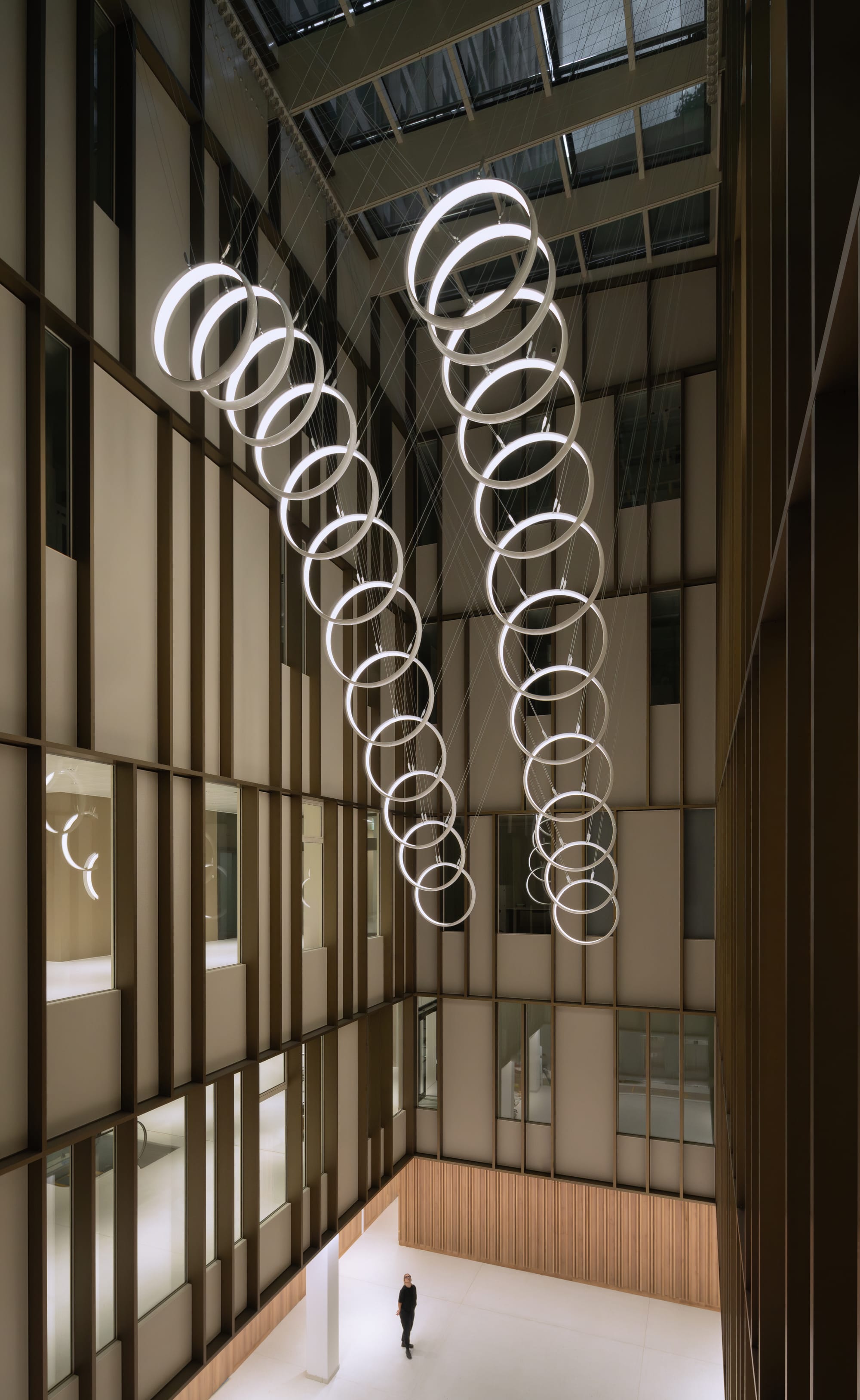
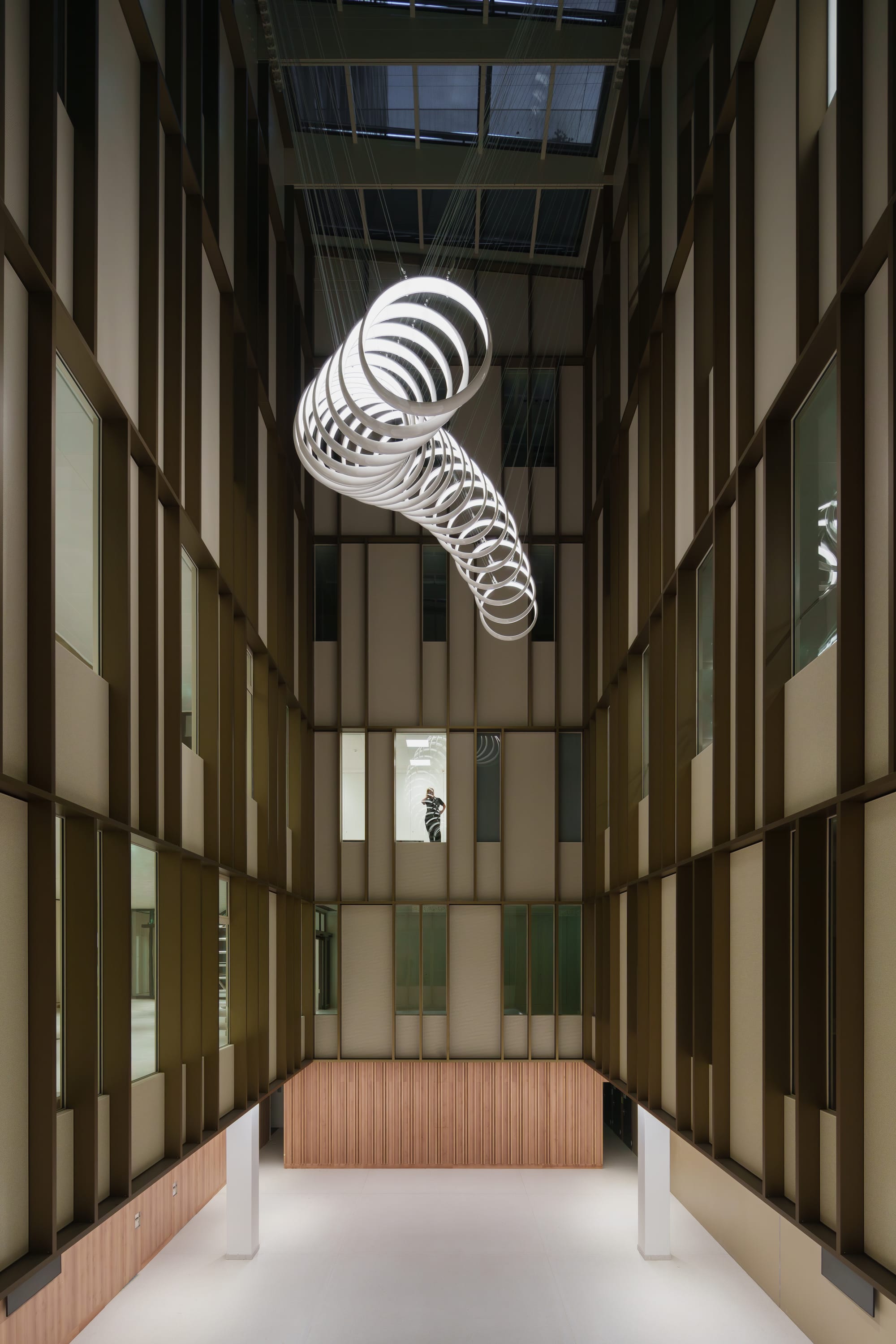
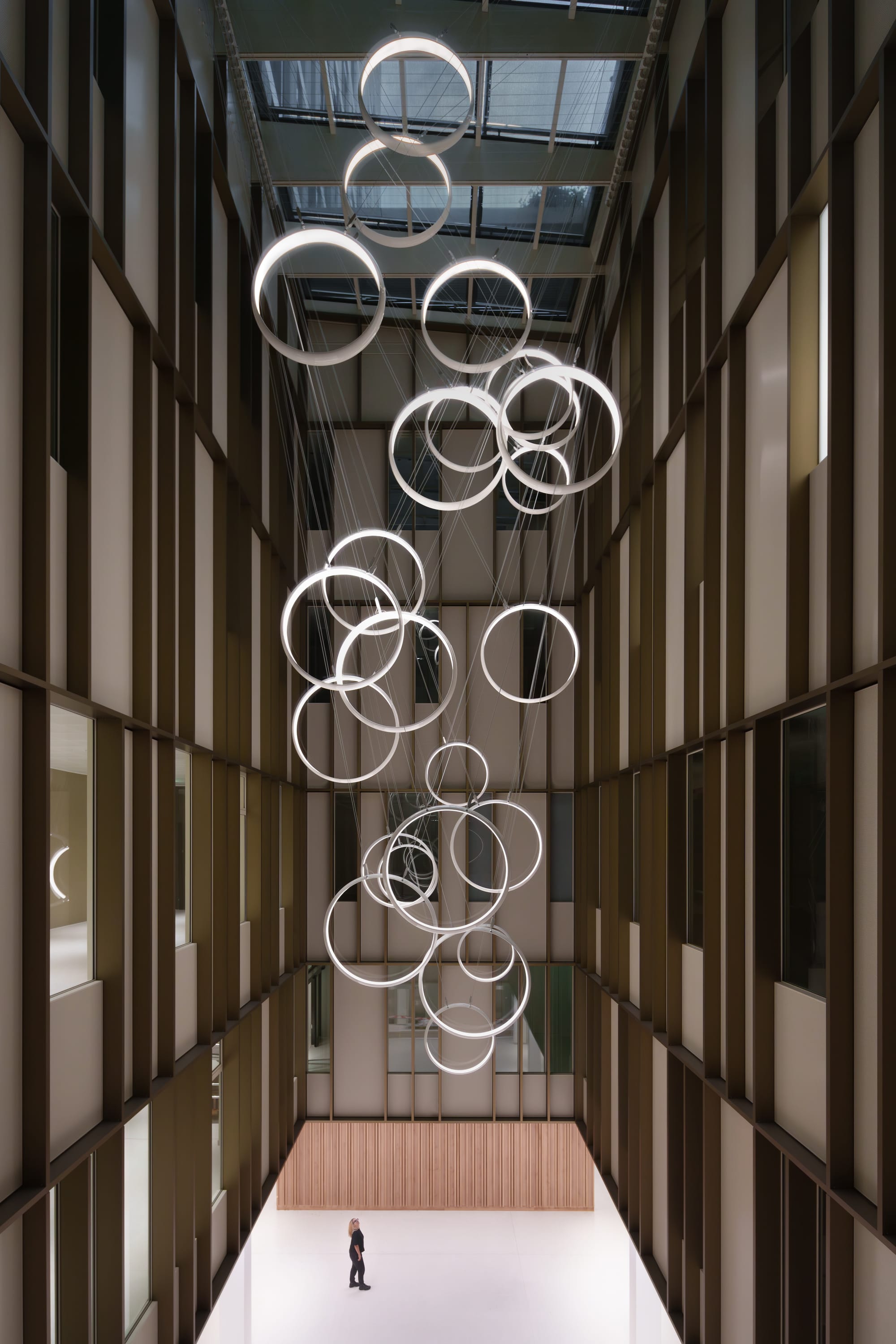
“Loops” builds upon SpY’s celebrated line of sculptural work in which modularity and movement are orchestrated to unprecedented effect. “Loops” builds upon SpY’s celebrated line of sculptural work.
What are you working on now?
I am developing my path as new opportunities for projects appear. I like to be able to discover new cultures around the world and to work with them, this is always approached as an exciting challenge. For now, the goal is walking the path itself, and enjoying it.
We will have to find out about the future as we go along.

